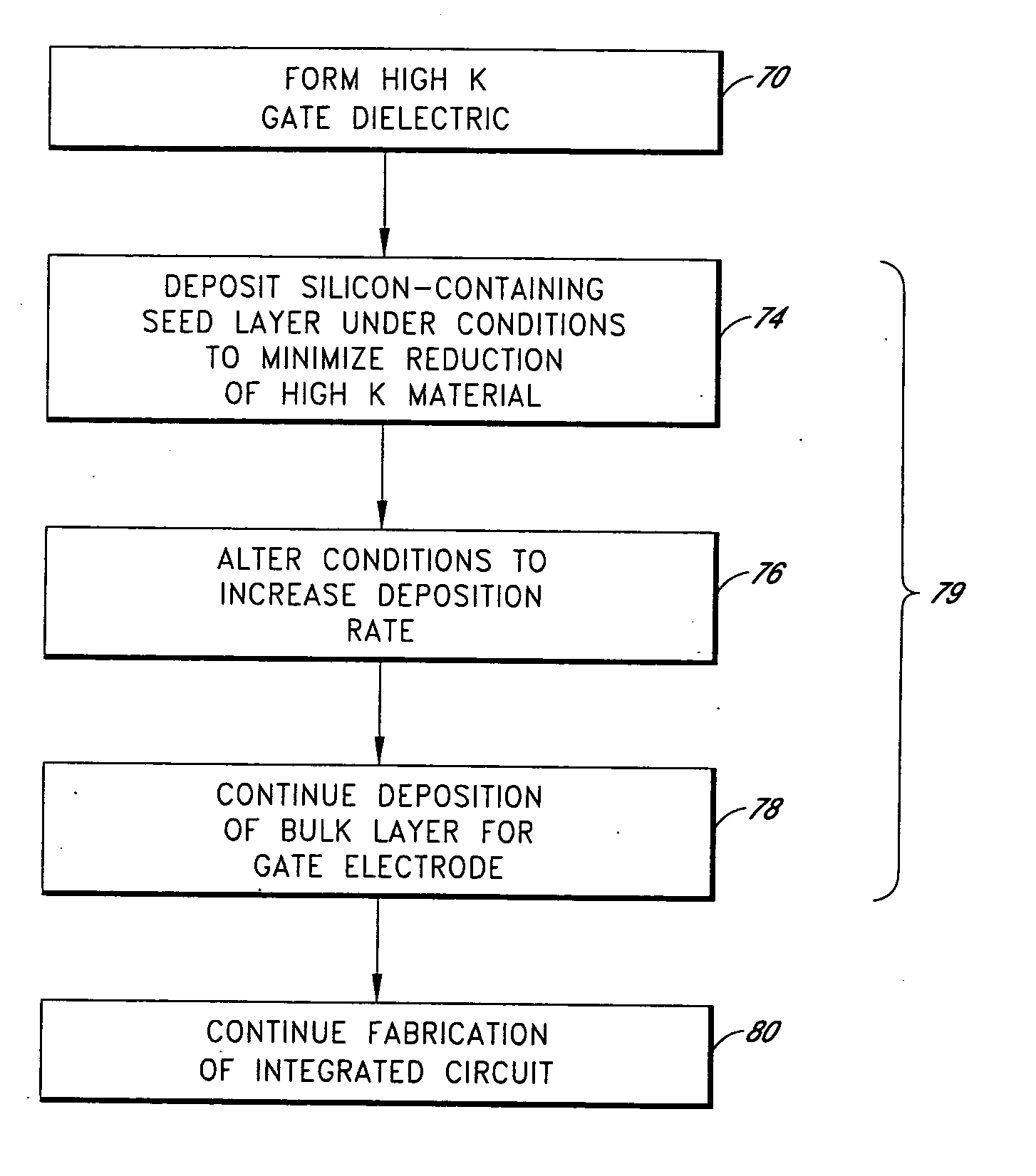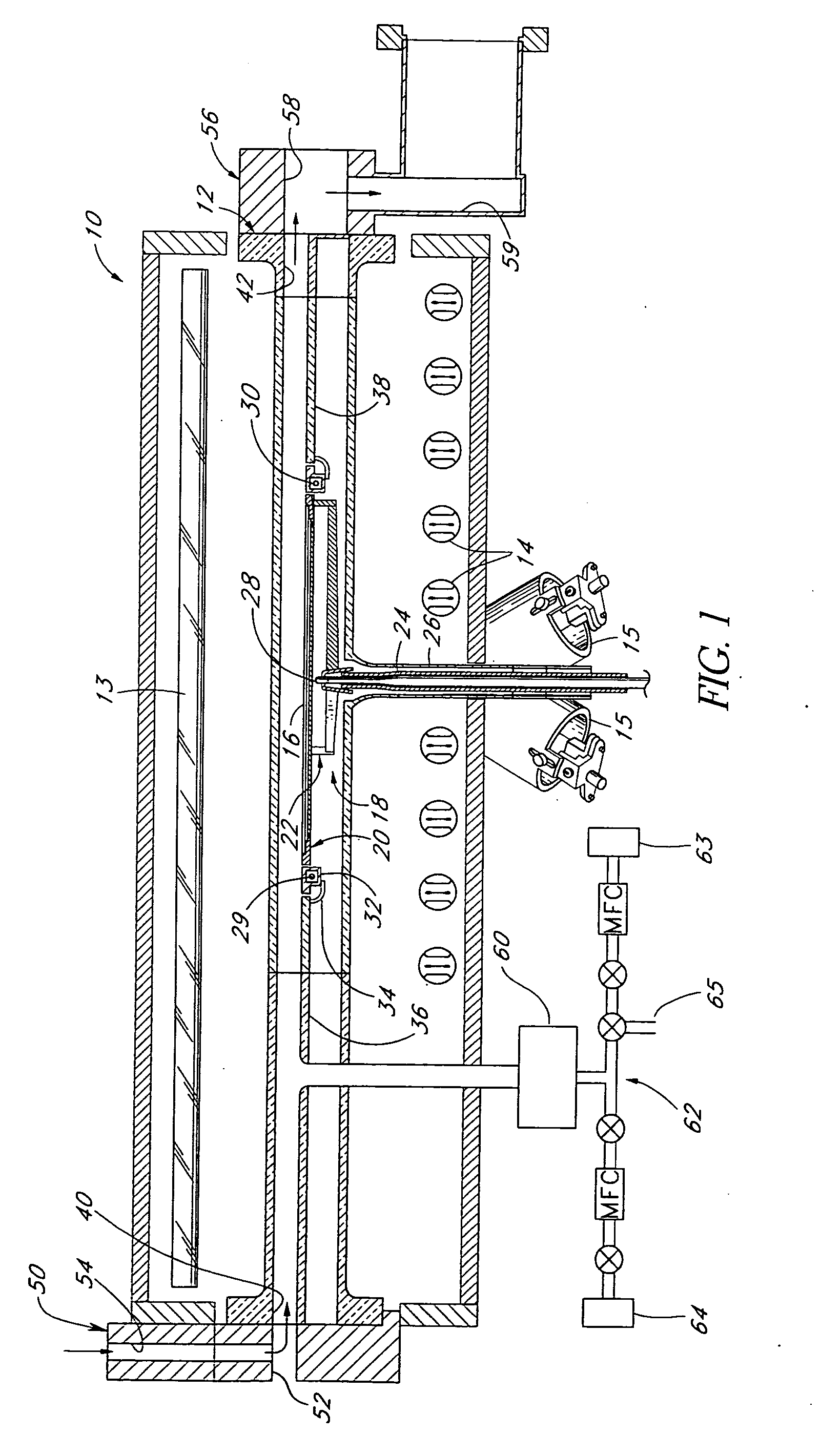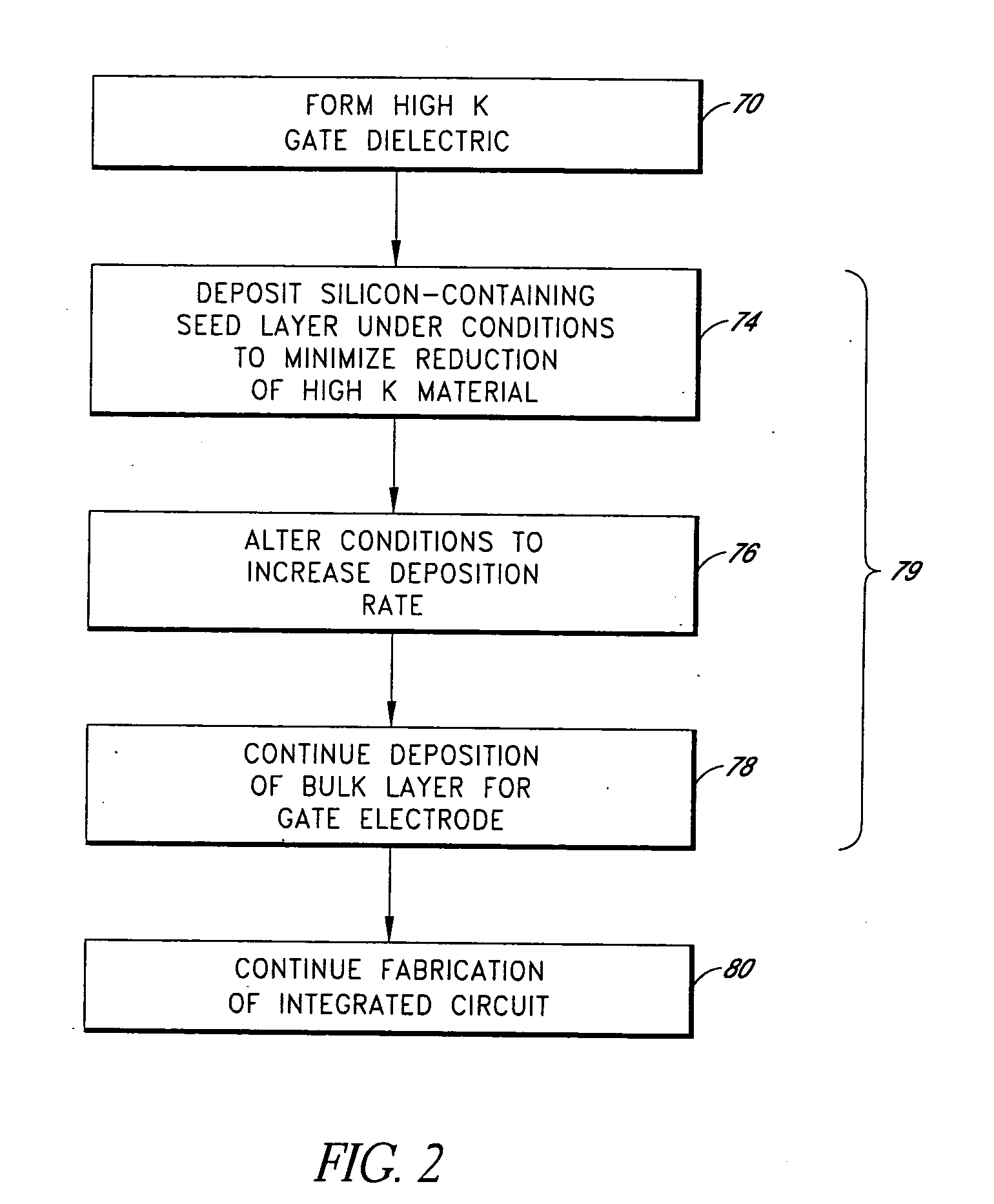Integration of high k gate dielectric
a high-k gate dielectric and integrated circuit technology, applied in the direction of sustainable manufacturing/processing, final product manufacturing, nanoinformatics, etc., can solve the problems of poor electrical performance of resultant devices, and achieve the effect of minimizing the reduction of high-k materials, minimizing diffusion of hydrogen, and not excessively affecting the overall throughput of deposition
- Summary
- Abstract
- Description
- Claims
- Application Information
AI Technical Summary
Benefits of technology
Problems solved by technology
Method used
Image
Examples
Embodiment Construction
[0034] While the preferred embodiments are described in the context of transistor gate stacks, the skilled artisan will readily appreciate that the principles disclosed herein have application to a variety of contexts in which layers must be deposited over high k materials. An example of such a context is in the formation of capacitor electrodes over high k dielectrics, proposed for high density memory cells in random access memory (RAM) arrays. The methods described herein are particularly advantageous for depositing silicon-containing layers over high k materials, but the skilled artisan will also appreciate applications of the principles and advantages described herein to depositing metallic electrodes over high k materials.
[0035] As noted in the Summary section above, conventional gate electrode deposition over high k gate dielectrics has been found to result in poor electrical performance of the resultant devices. In order to increase the reliability and yield of the integrate...
PUM
| Property | Measurement | Unit |
|---|---|---|
| temperature | aaaaa | aaaaa |
| temperature | aaaaa | aaaaa |
| partial pressure | aaaaa | aaaaa |
Abstract
Description
Claims
Application Information
 Login to View More
Login to View More - R&D
- Intellectual Property
- Life Sciences
- Materials
- Tech Scout
- Unparalleled Data Quality
- Higher Quality Content
- 60% Fewer Hallucinations
Browse by: Latest US Patents, China's latest patents, Technical Efficacy Thesaurus, Application Domain, Technology Topic, Popular Technical Reports.
© 2025 PatSnap. All rights reserved.Legal|Privacy policy|Modern Slavery Act Transparency Statement|Sitemap|About US| Contact US: help@patsnap.com



